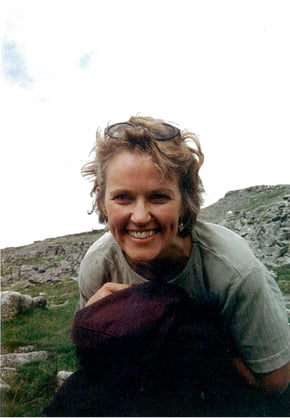How to keep your resolutions and cultivate fertile ground for changes that will last.
In a previous post, we examined a popular trend claiming that you create your own reality. I related it to a kind of magical thinking that first denies the reality of things “out there” and then insists that our thinking and perceptions create our reality.
But this trend should cause us to ask: can we change our current reality, the circumstances of our daily lives? Can we change ourselves, and if so, how do we do that?
Let’s take a look, especially now while New Year’s resolutions still dance in our heads.
The Christian vocation calls us to change
In our hearts, we are restless. This can motivate us to seek improvement, to rid ourselves of emotional and spiritual blocks, to become the best version of who we are meant to be.
In the Gospels, Jesus exhorts us to this kind of change many times over, such as, “unless you become like little children…” or “unless you take up your cross and come after me...” Then there is the very intimidating, “Be perfect as your heavenly Father is perfect.”
We can change our reality, but first we have to change ourselves
In changing our reality, one of the first steps needed is hope—hope that the future can be different from your current reality. The second key is the recognition that you are in control and that your life is not determined by your current circumstances.
This does not mean that you can magically change your external circumstances, but that you are in control of your response to them. How you think about your circumstances, what you tell yourself about your abilities, your potential, and your future reality, will determine the outcome more than “willpower,” more than writing them down, or telling someone to hold you accountable.
People tend to focus attention on will-power when trying to make changes, and in terms of traditional virtues, self-control does have aspects of both fortitude and temperance.
Surprisingly, however, there is a significant amount of research documenting the limitations of “self control.” According to this study, practicing self-control even once makes it easier to do so again, but relying solely on will power “makes us more likely to give up altogether.”
What might this mean in light of our desire to change and cooperate with the action of grace in our ongoing struggle to become more like Christ?

St. Ignatian examen plus positive psychology
Fr. Spitzer has covered the topic of moral conversion in multiple articles and lectures, and in this series of posts in which he reminds us of the importance of the Ignatian daily examen to become aware of faults and failings that we need to change:
First Point: To give thanks to God for the benefits received that day.
Second Point: To ask for the grace to know our sins and cast them out.
Third Point: To ask account of our soul from the hour that we rose up to the present Examen, hour by hour, or period by period.
Fourth Point: To ask pardon of God for the faults.
Fifth Point: To resolve to sin no more with the help of His grace.
Fr. Spitzer also points to the role of the subconscious mind as a significant part in the story of conversion. So often we want to change, but fail again and again. As pointed out above, self control might not be the issue. Why?
The subconscious mind contains the inner story we have embraced about ourselves, our abilities and our potential. The first task then is to change our subconscious “self-talk” or self-efficacy. Dr. Alfred Bandura, professor of psychology at Stanford University, defines this as “one’s belief in one’s ability to succeed in specific situations or accomplish a task.”
Applied to moral conversion, you choose the virtue that is opposed to the vice revealed by your daily examen, find a role model (one of the saints perhaps or Jesus Himself), and then visualize yourself practicing that virtue. The second technique, to affirm what you have visualized, requires you to put your chosen virtue into a positive affirmative sentence and repeat it to yourself. For examples and other helpful hints, Fr. Spitzer’s post here is invaluable.
Lastly, we can use spontaneous prayers to Jesus, Mary, and the saints asking for strength and inspiration to persist in our efforts to resist temptations and to become who God is calling us to be—an image of His Son.
Hope springs from eternity
Change is possible! The techniques of visualization and positive affirmations can be applied to many areas of our lives—even in helping us keep our New Year’s resolutions. But if we limit our thinking to material existence and block ourselves off from transcendent reality, this endless striving, this looking for “perfection,” can lead to a kind of existential despair. It may seem there is no meaning to our strivings, our sufferings, and our programs for improvement of ourselves and of society.
Longing for perfection
This very longing for perfection is telling us something about us: there is more to existence than the material world. No matter how successful or enlightened we become, our achievement of material happiness still leaves us hungry.
So Love entered the world, the Bread of Life, joining us in this broken, messy, chaotic, material world to show us how to live a good life here. We do this best by living now, through grace, within the eternal embrace of Triune Love and by sharing that love with others.
He came to give us life in abundance, to show us the truth about ourselves, and to point out the way Home. To help you start or continue the adventure of conversion, download this PDF on the 5 steps of the Ignatian examen plus the three steps added by Fr. Spitzer.
Read Also:
Increasing Happiness Through the Exploration of Transcendence

